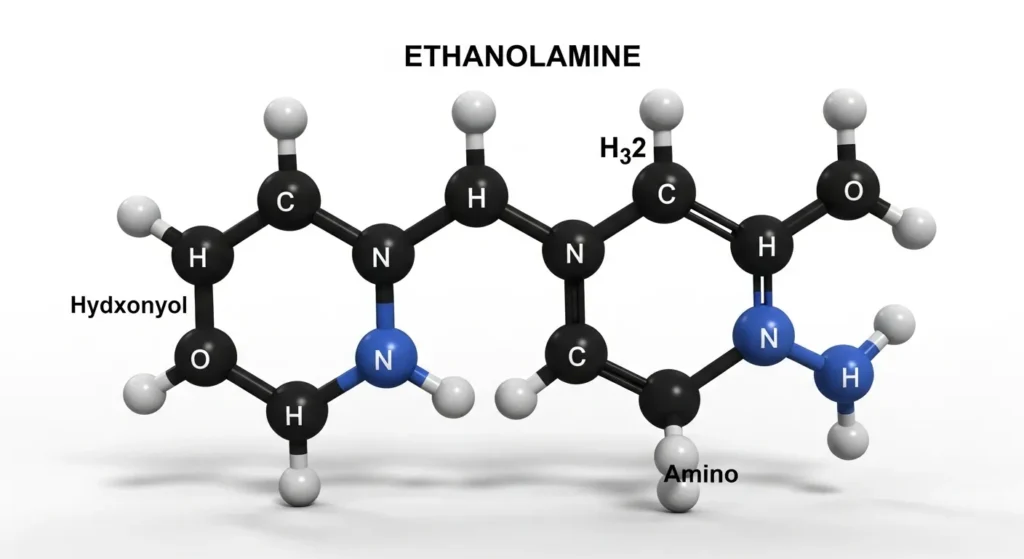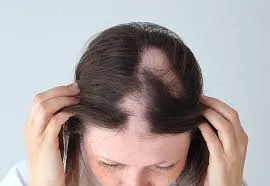Worried that a hair product ingredient might be behind your sudden hair shedding? You’re not alone. Many people search “ethanolamine hair loss — will it grow back?” after noticing thinning hair or scalp irritation.
In this article, we explore the science behind ethanolamine, whether hair regrowth is possible after exposure, and how to protect your scalp moving forward. You’ll also learn about safer alternatives, expert tips, and when to seek medical advice. Let’s uncover the facts and give your hair a second chance.
What Is Ethanolamine and Why Is It Used in Hair Products?
Definition and Chemical Nature

Ethanolamine is an organic chemical compound used as an emulsifier or pH adjuster in cosmetic products. It belongs to the ethanolamines group, which includes DEA (diethanolamine) and TEA (triethanolamine).
Common Products That Contain Ethanolamine
You’ll find ethanolamine in:
- Permanent hair dyes
- Chemical relaxers and straighteners
- Some shampoos and conditioners
- Skin creams and sunscreens
Its main role is to help active ingredients mix properly and maintain pH balance, especially in hair colorants.
Comparison with DEA and TEA
While DEA and TEA have raised more public concern due to links with cancer and skin irritation in high concentrations, ethanolamine also poses potential toxicity risks, especially with repeated use.
Can Ethanolamine Cause Hair Loss?
How It Affects the Scalp and Follicles
Ethanolamine can compromise scalp health by:
- Breaking down the skin barrier
- Causing irritation or inflammation
- Weakening hair follicles over time
Repeated exposure may lead to follicle miniaturization, a key factor in hair thinning.
Inflammation, Allergic Reactions & Scalp Irritation
For individuals with sensitive skin or allergies, ethanolamine can trigger:
- Contact dermatitis
- Redness, itching, and flaking
- Long-term scalp inflammation
This inflammatory response may disrupt the hair growth cycle and contribute to shedding.
Scientific Studies or Case Reports Linking Ethanolamine to Hair Loss
While limited in human clinical data, animal studies and in vitro research suggest ethanolamine may be cytotoxic to skin cells at high doses. More evidence is needed, but the risk of irritation-induced hair loss is acknowledged in dermatology.
Risk Factors
You may be at higher risk if you:
- Use ethanolamine-based products frequently
- Have a sensitive scalp or eczema
- Leave hair dye on longer than instructed
- Combine it with other harsh chemicals
Ethanolamine Hair Loss – Will It Grow Back?
Temporary vs. Permanent Hair Loss
Good news: Most ethanolamine-related hair loss is temporary. Once the irritant is removed and the scalp heals, many people see regrowth within 3 to 6 months.
How Quickly Hair Might Regrow After Discontinuing Use
- Mild irritation: regrowth may start within 4–6 weeks
- Moderate damage: expect improvement in 2–3 months
- Severe inflammation: regrowth may take up to 6 months or longer
Factors That Affect Regrowth
- Age: Younger individuals tend to regenerate faster
- Hair cycle phase: If follicles were in telogen (resting phase), regrowth is slower
- Health: Deficiencies, stress, or other medications can delay recovery
How to Treat Ethanolamine-Related Hair Loss
1. Stop Using Products with Ethanolamine
Immediately discontinue any product containing:
- Monoethanolamine (MEA)
- DEA or TEA derivatives
Carefully read labels to identify and avoid related compounds.
2. Gentle Scalp Care & Detox
- Use sulfate-free, pH-balanced shampoos
- Massage the scalp gently to boost circulation
- Avoid heat styling and chemical treatments
3. Use of Hair Growth Products
- Minoxidil (Rogaine): Can stimulate follicles and encourage growth
- Biotin supplements: Support healthy keratin production
- DHT-blocking serums: Useful if male or female pattern thinning is also involved
4. When to See a Dermatologist or Trichologist
Seek professional help if:
- Hair loss persists for more than 3 months
- You notice scarring or patchy bald spots
- There’s ongoing irritation despite stopping product use
Safer Alternatives to Ethanolamine in Hair Products
Ingredient Swaps
- Use dyes formulated with ammonia-free and MEA-free bases
- Seek natural emulsifiers like coconut-derived agents
Organic and Sulfate-Free Recommendations
Look for certified organic products that are:
- Fragrance-free
- Non-comedogenic
- Dermatologically tested
How to Read Product Labels
Watch for terms like:
- “pH adjuster”
- “MEA, DEA, TEA”
- “Cocamide DEA” (a common derivative)
Apps like Think Dirty or EWG’s Skin Deep can help decode ingredients.
Prevention Tips to Protect Your Hair from Product Damage
- Patch test all new products before full use
- Limit the use of permanent dyes to no more than every 6–8 weeks
- Use deep-conditioning masks weekly
- Avoid combining multiple chemical treatments (e.g., dye + relaxer)

FAQs About Ethanolamine and Hair Loss
Q1. Does every ethanolamine product cause hair loss?
Not necessarily. Hair loss risk increases with high concentrations or frequent use, especially on sensitive scalps.
Q2. How long does it take for hair to grow back after stopping use?
Most people see results in 2–4 months, depending on severity and individual health.
Q3. Is ethanolamine safe in low concentrations?
In regulated amounts, it’s considered safe by cosmetic standards, but sensitivity varies.
Q4. Can a salon hair dye with ethanolamine still be used safely?
It depends on the formulation. If you’ve experienced irritation, opt for safer, ammonia-free alternatives.
Q5. What are the signs of chemical-related hair loss?
Excessive shedding, itching, redness, or visible scalp irritation shortly after product use.
Final Thoughts
Experiencing hair loss from your shampoo or dye? Book a personalized consultation with Dr. Rana Irfan in Islamabad today.
Get expert diagnosis, scalp health analysis, and a safe recovery plan tailored to your hair needs.
